
Hove is a seaside resort in East Sussex, England. Alongside Brighton, it is one of the two main parts of the city of Brighton and Hove.
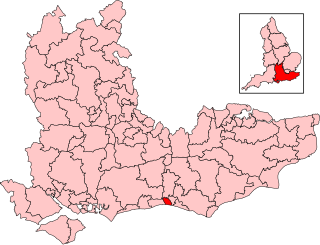
Hove and Portslade is a borough constituency in East Sussex represented in the House of Commons of the UK Parliament since 2015 by Peter Kyle on behalf of the Labour Party.

Hangleton is a suburb of Brighton and Hove, in the ceremonial county of East Sussex, England. The area was developed in the 1930s after it was incorporated into the Borough of Hove, but has ancient origins: its parish church was founded in the 11th century and retains 12th-century fabric; the medieval manor house is Hove's oldest secular building. The village became depopulated in the medieval era and the church fell into ruins, and the population in the isolated hilltop parish only reached 100 in the early 20th century; but rapid 20th-century development resulted in more than 6,000 people living in Hangleton in 1951 and over 9,000 in 1961. By 2013, the population exceeded 14,000.

Mile Oak is a locality forming the northern part of the former parish of Portslade in the northwest corner of the city of Brighton and Hove, England. Now mostly residential, but originally an area of good-quality agricultural land, it covers the area north of Portslade village as far as the urban boundary.
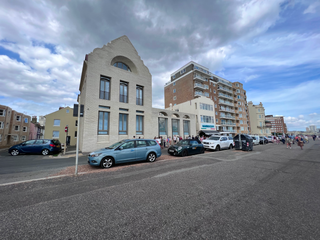
The original Medina House in Hove, Sussex, was the eastern of two seafront buildings, located on either side of Sussex Road, which together comprised Hove Baths, later to become more popularly known as the Medina Baths. The western building housed the men's baths, and the eastern building housed the women's baths.
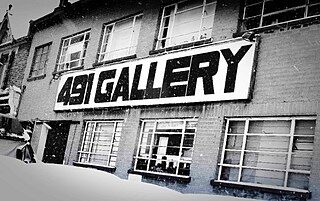
The 491 Gallery was a squatted self-managed social centre and multi-disciplinary gallery in Leytonstone, London, England, that operated from 2001 to 2013. Taking its name from its street number, 491 Grove Green Road, the former factory was home to a community-led art organisation and served as an exhibition space for a diverse range of artists of different origins working in varied media. It contained a range of art and music studios, which were used to host workshops, classes and musical rehearsals. The building was subsequently demolished in 2016.

St Nicolas Church is an Anglican church in the Portslade area of the English city of Brighton and Hove. It has 12th-century origins, and serves the old village of Portslade, inland from the mostly 19th-century Portslade-by-Sea area.

Hove Methodist Church is one of five extant Methodist churches in the city of Brighton and Hove, England. Founded on a site on Portland Road, one of Hove's main roads, in the late 19th century by a long-established Wesleyan community, it was extended in the 1960s and is now a focus for various social activities as well as worship. The red-brick building has been listed at Grade II by English Heritage in view of its architectural importance.

Hove Museum of Creativity is a municipally-owned museum in the town of Hove, which is part of the larger city of Brighton and Hove in the South East of England. The museum is part of Brighton & Hove Museums, and admission is free. Opened in 1927 by the Hove Corporation, the museum is located in a late 19th-century villa originally known as Brooker Hall.

Brighton and Hove, a city on the English Channel coast in southeast England, has a large and diverse stock of buildings "unrivalled architecturally" among the country's seaside resorts. The urban area, designated a city in 2000, is made up of the formerly separate towns of Brighton and Hove, nearby villages such as Portslade, Patcham and Rottingdean, and 20th-century estates such as Moulsecoomb and Mile Oak. The conurbation was first united in 1997 as a unitary authority and has a population of about 253,000. About half of the 20,430-acre (8,270 ha) geographical area is classed as built up.

The English coastal city of Brighton and Hove, made up of the formerly separate Boroughs of Brighton and Hove in East Sussex, has a wide range of cemeteries throughout its urban area. Many were established in the mid-19th century, a time in which the Victorian "cult of death" encouraged extravagant, expensive memorials set in carefully cultivated landscapes which were even recommended as tourist attractions. Some of the largest, such as the Extra Mural Cemetery and the Brighton and Preston Cemetery, were set in particularly impressive natural landscapes. Brighton and Hove City Council, the local authority responsible for public services in the city, manages seven cemeteries, one of which also has the city's main crematorium. An eighth cemetery and a second crematorium are owned by a private company. Many cemeteries are full and no longer accept new burials. The council maintains administrative offices and a mortuary at the Woodvale Cemetery, and employs a coroner and support staff.
Cox & Barnard Ltd was a stained glass designer and manufacturer based in Hove, part of the English city of Brighton and Hove. The company was founded in Hove in 1919 and specialised in stained glass for churches and decorative glass products. Many commissions came from Anglican and Roman Catholic churches in the English counties of East Sussex, West Sussex and Kent. The company was also responsible for six war memorial windows at an Anglican church in Canada, made from shards of glass collected from war-damaged church windows across Europe.
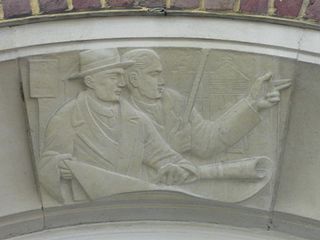
John Leopold DenmanFRIBA was an architect from the English seaside resort of Brighton, now part of the city of Brighton and Hove. He had a prolific career in the area during the 20th century, both on his own and as part of the Denman & Son firm in partnership with his son John Bluet Denman. Described as "the master of ... mid-century Neo-Georgian", Denman was responsible for a range of commercial, civic and religious buildings in Brighton, and pubs and hotels there and elsewhere on the south coast of England on behalf of Brighton's Kemp Town Brewery. He used other architectural styles as well, and was responsible for at least one mansion, several smaller houses, various buildings in cemeteries and crematoria, and alterations to many churches. His work on church restorations has been praised, and he has been called "the leading church architect of his time in Sussex"; he also wrote a book on the ecclesiastical architecture of the county.
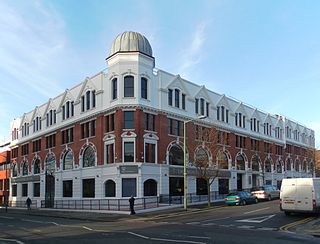
The Montefiore Hospital is a private hospital in Hove, part of the English coastal city of Brighton and Hove. It opened in November 2012 and is operated by Spire Healthcare, the second largest provider of private healthcare in the United Kingdom. The hospital is located in a large and "distinctive Edwardian commercial building" designed by prolific local architects Clayton & Black between 1899 and 1904. Originally built for local department store Hanningtons as a furniture depository, the "magnificent red-brick building" was converted into offices for the Legal & General insurance company in 1972. Six years after that firm moved to a new site in Hove, Spire Healthcare bought the empty building and spent £25 million converting it into a hospital.
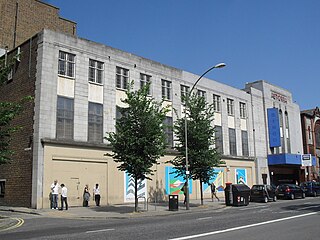
The Astoria Theatre was a former cinema in Brighton, part of the English coastal city of Brighton and Hove. Built in 1933 in the Art Deco style for a local entertainment magnate who opened one of Brighton's first cinemas many years earlier, it was the first and most important expansion of the Astoria brand outside London. It initially struggled against the town's other "super-cinemas", but enjoyed a period of success in the 1950s and 1960s before rapid decline set in, culminating in its closure in 1977.

The Bear Road area is a largely residential area in the east of Brighton, part of the English city of Brighton and Hove. Centred on the steep west–east road of that name, it is characterised by terraced houses of the early 20th century, but Brighton's main cemeteries were established here in the 19th century and there is also some industry.
Brighton Photo Biennial (BPB), now known as Photoworks Festival, is a month-long festival of photography in Brighton, England, produced by Photoworks. The festival began in 2003 and is often held in October. It plays host to curated exhibitions across the city of Brighton and Hove in gallery and public spaces. Previous editions have been curated by Jeremy Millar (2003), Gilane Tawadros (2006), Julian Stallabrass (2008), Martin Parr (2010) and Photoworks (2012). Brighton Photo Biennial announced its merger with Photoworks in 2006 and in 2020 its name was changed to Photoworks Festival.
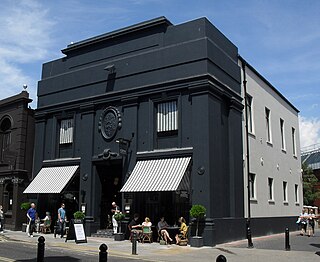
The English coastal city of Brighton and Hove has a long and varied history of libraries going back over 250 years. Subscription libraries were among the earliest buildings in the resort of Brighton, which developed in the late 18th century; by the 1780s these facilities, which were more like social clubs than conventional book-borrowing venues, were at the heart of the town's social scene. The Brighton Literary Society, its successor the Brighton Royal Literary and Scientific Institution and its rival the Sussex Scientific Institution between them established a "very fine collection" of publications by the mid-19th century, and these books were donated to the town when a public library was founded in 1871. Neighbouring Hove, originally a separate village, established its own public library in 1890.

Brighton and Hove, a city and unitary authority in the English county of East Sussex, has a wide range of public services funded by national government, East Sussex County Council, Brighton and Hove City Council and other public-sector bodies. Revenue to fund these services comes partly from Council Tax, which is paid annually by residents: this tax provides the city council with nearly 20% of its income and also helps to fund the local police force, Sussex Police, and the county's fire service, East Sussex Fire and Rescue Service. Some of Brighton and Hove's utilities and infrastructure are provided by outside parties, such as utility companies, rather than by the city council.
















